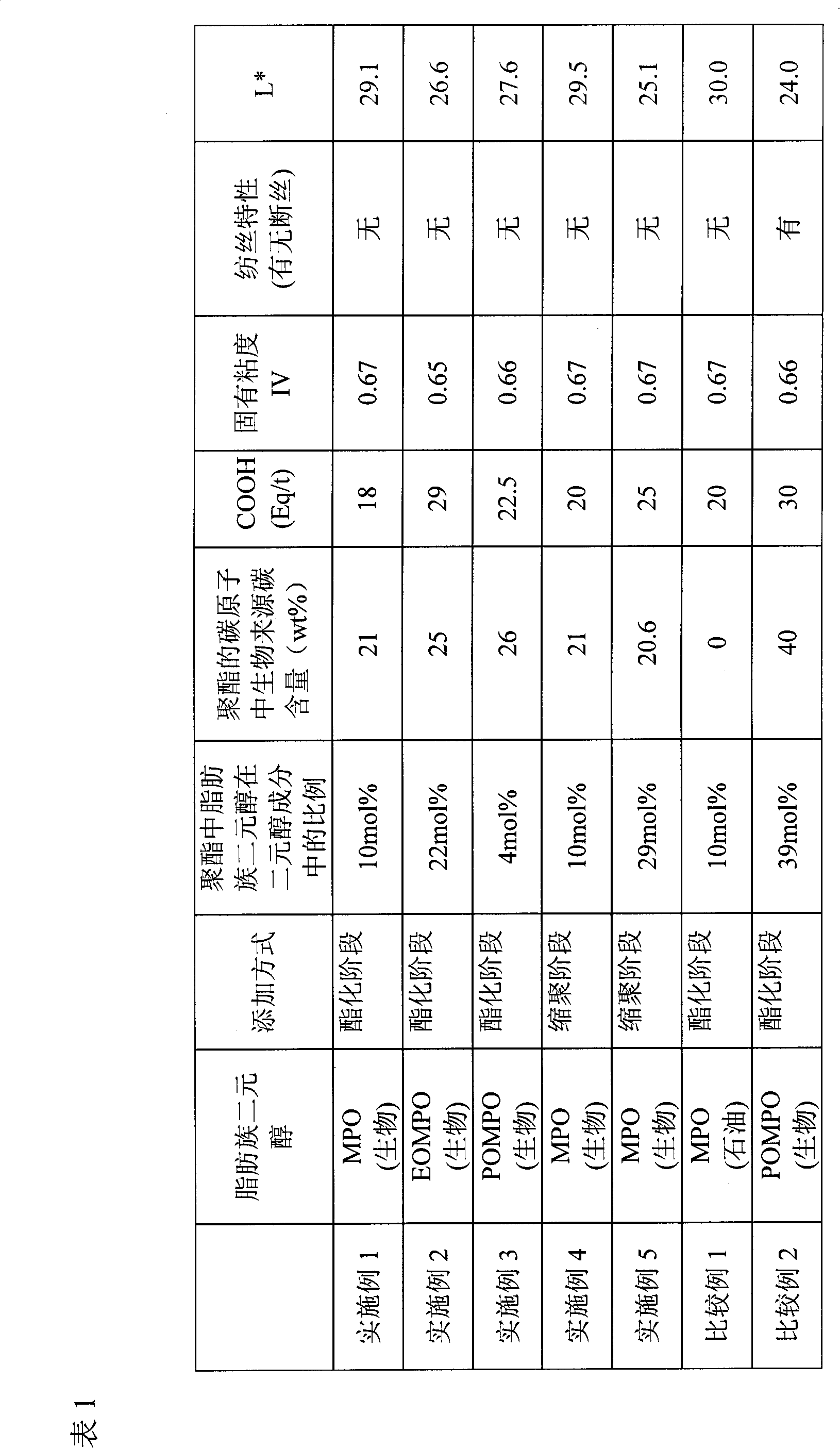Polyester and preparation method and usage thereof
A polyester and bio-sourced technology, applied in the direction of single-component copolyester artificial filaments, etc., can solve the problems of restricting the application of fiber fields, polyester does not have normal pressure dyeability, and achieve the effect of reducing pollution
- Summary
- Abstract
- Description
- Claims
- Application Information
AI Technical Summary
Problems solved by technology
Method used
Image
Examples
Embodiment 1
[0063] (1) Preparation of bio-derived ethylene glycol (EG):
[0064] The starch is separated from corn through a biological process and processed to obtain sugars with five or six carbon atoms. These sugars are fermented to obtain ethanol. The ethanol is dehydrated to obtain ethylene. The ethylene is oxidized to obtain ethylene oxide. The ethylene oxide is added Hydrogen catalysis produces bio-ethylene glycol.
[0065] (2) Preparation of 2-methyl-1,3-propanediol (MPO):
[0066] The starch is obtained by biological separation from wheat straw, which is processed to obtain sugars with five or six carbon atoms. These sugars are fermented into ethanol, the ethanol is dehydrated to obtain ethylene, and ethylene is dimerized to obtain butene, which is then metathesized with ethylene Propylene is obtained by the reaction, propylene is oxidized to obtain propylene oxide and then hydrogenated to obtain propenol; and propenol is reacted with bio-based carbon monoxide and hydrogen to obtain MP...
Embodiment 2
[0073] Preparation of 2-methyl-1,3-propanediol (EOMPO):
[0074] MPO was prepared according to the method described in Example 1; MPO and ethylene oxide were stirred at high temperature under the catalysis of alkali metals to obtain EOMPO.
[0075] In the esterification reaction stage, the added diol is bio-derived ethylene glycol containing 25 mol% of bio-source EOMPO, and no PEG is added in the polycondensation reaction stage, and the others are reacted with Example 1 to obtain polyester.
[0076] The obtained polyester was dyed and evaluated according to the method of Example 1. L * = 26.6.
[0077] See Table 1 for other physical properties of polyester.
Embodiment 3
[0079] Preparation of 2-methyl-1,3-propanediol (POMPO) dipropoxy:
[0080] MPO was prepared according to the method described in Example 1; MPO and propylene oxide were stirred at high temperature under the catalysis of alkali metals to obtain POMPO.
[0081] In the esterification reaction stage, the added glycol is bio-derived ethylene glycol containing 5 mol% of bio-derived POMPO, and no PEG is added in the polycondensation reaction stage. The other reactions are the same as in Example 1 to obtain polyester.
[0082] The obtained polyester was dyed and evaluated according to the method of Example 1. L * = 27.6.
[0083] See Table 1 for other physical properties of polyester.
PUM
 Login to View More
Login to View More Abstract
Description
Claims
Application Information
 Login to View More
Login to View More - R&D
- Intellectual Property
- Life Sciences
- Materials
- Tech Scout
- Unparalleled Data Quality
- Higher Quality Content
- 60% Fewer Hallucinations
Browse by: Latest US Patents, China's latest patents, Technical Efficacy Thesaurus, Application Domain, Technology Topic, Popular Technical Reports.
© 2025 PatSnap. All rights reserved.Legal|Privacy policy|Modern Slavery Act Transparency Statement|Sitemap|About US| Contact US: help@patsnap.com

